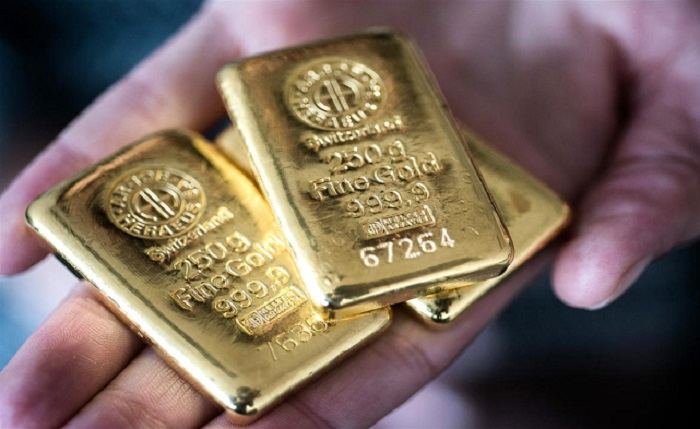Gold prices surged to an unprecedented $2,940 per ounce on Tuesday, February 11, 2025, marking a new all-time high and extending the metal’s bullish streak into the seventh consecutive week of gains. This record-setting performance has pushed gold’s value up by 12% since the beginning of the year. The primary catalysts behind the surge include growing geopolitical tensions and heightened concerns over inflation, both of which have amplified demand for gold as a safe-haven asset.
Despite the strong upward momentum, the metal faced a sharp pullback following the all-time high, dropping to $2,905 before stabilizing at $2,912 during the European trading session. The $2,900 level now serves as an important short-term support level, and traders are closely monitoring whether gold can maintain its momentum or if a deeper retracement is on the horizon. With the record high and the psychological $2,900 support level in play, the market’s next moves remain uncertain as investors assess the potential for further gains or a cooling-off period.
Geopolitical Risks and Inflation Fears Fuel Gold’s Rally
The relentless rise in gold prices has been driven by a combination of escalating geopolitical risks and a renewed global trade war narrative. The imposition of new tariffs by U.S. President Donald Trump on commodity imports, coupled with threats of retaliatory measures, has raised fears of economic disruption. These concerns are compounded by ongoing tensions related to Israel’s military actions and the ongoing hostage crisis, which have further exacerbated demand for gold as a traditional safe-haven asset. As investors seek protection from the uncertain global landscape, gold has once again proven to be a reliable store of value.
In addition to geopolitical instability, investors are increasingly looking to gold as a hedge against potential inflation. Many market participants anticipate that President Trump’s protectionist trade policies will contribute to rising inflationary pressures, further bolstering the appeal of the precious metal. Gold’s role as a safeguard against inflation has been well established throughout history, and in times of rising prices, its value tends to increase as it retains purchasing power.
Interest Rates and the Opportunity Cost of Holding Gold
Despite the bullish sentiment surrounding gold, certain economic factors could temper its upward trajectory. The Federal Reserve’s stance on interest rates plays a significant role in gold’s performance, as the precious metal does not offer yields. Market expectations indicate that the Federal Reserve is likely to maintain steady interest rates, given the strength of the U.S. labor market and the persistence of inflationary pressures. While the Fed’s decisions provide some stability, higher or steady interest rates generally create a headwind for gold. In such an environment, the opportunity cost of holding a non-yielding asset like gold increases, making it less attractive relative to assets that offer returns.
Despite this, the overall macroeconomic environment has led many investors to continue seeking gold’s protective benefits. The ongoing uncertainties in the global trade landscape, coupled with inflation concerns, keep demand for gold elevated, allowing the metal to sustain its upward momentum.
$2,900 Becomes Critical Support Level
Gold’s pullback from the record high of $2,940 is being attributed to extreme overbought conditions. The metal’s rapid ascent in recent weeks, driven by geopolitical and inflation concerns, had pushed gold into an overbought zone, leading to the recent price retreat. However, the psychological $2,900 level has now emerged as an important line in the sand for traders. This level represents immediate support, and market participants are keeping a close watch to see whether gold will bounce from this threshold or experience a deeper correction.
If gold fails to hold at $2,900 and experiences a break below this level, traders could see further declines toward lower support zones. On the other hand, if gold finds support and the bullish momentum resumes, the metal could potentially retest the $2,940 record high and extend its seven-week winning streak. Traders and investors alike are awaiting signals from both technical indicators and broader economic developments to gauge whether gold’s rally has further room to run or if a more substantial retracement is on the horizon.
As it stands, gold has already demonstrated an impressive performance in 2025, rising over 10% in value, driven by a combination of political uncertainties, trade tensions, and inflation fears. The metal’s ability to sustain its current level will depend on how these factors continue to evolve in the coming weeks. Whether gold can continue its upward trajectory or take a breather remains a key question for investors as they navigate the current market climate.
Related topics:
- What is the Value of 18K Gold?
- Why Does Gold Price Increase During War?
- What is the Best Price Being Paid for Gold Sovereigns?


